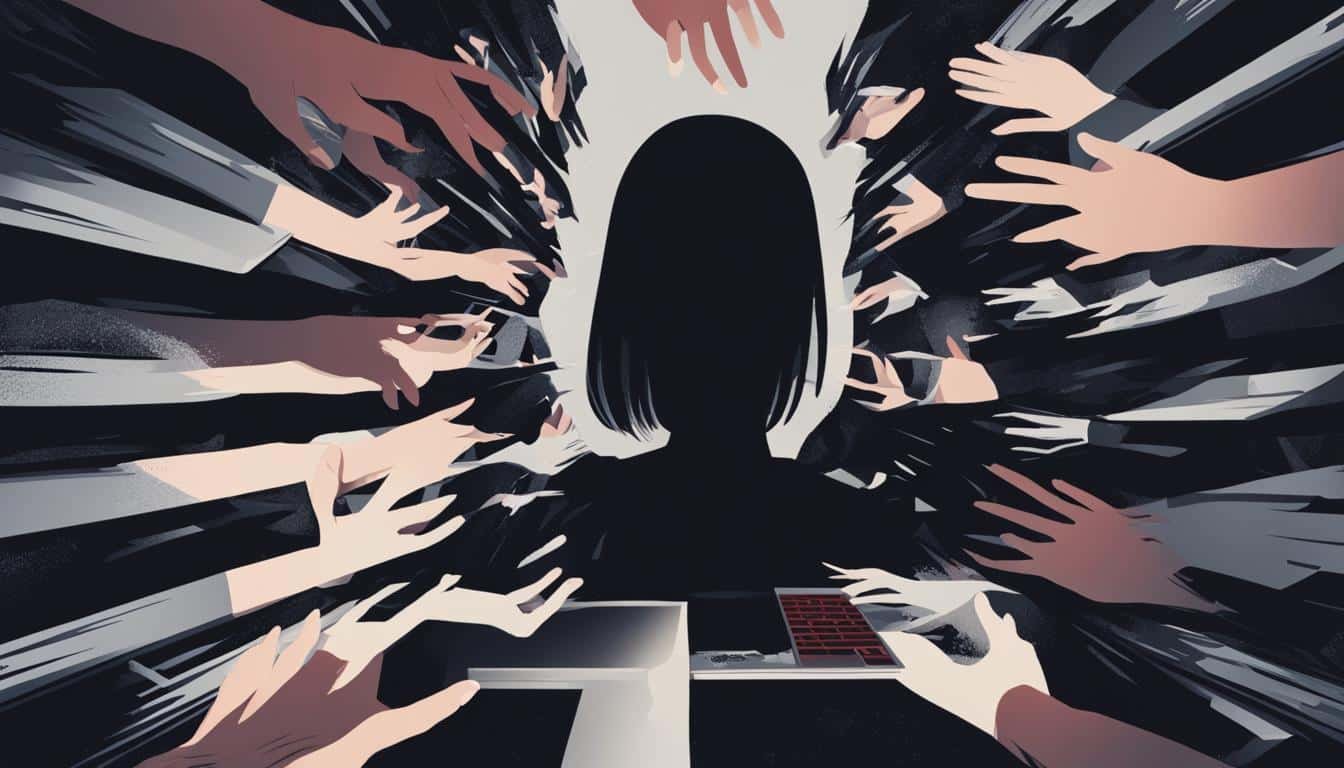Welcome to our article on the different types of internet obscenity crimes, their implications, and the challenges they pose in the digital world. In today’s technologically advanced society, where the internet plays a significant role in our daily lives, it is crucial to understand the complexities of obscenity laws and their application. Let’s delve into this fascinating and important topic.
Key Takeaways:
- Types of Internet Obscenity Crimes
- Understanding Internet Obscenity and its impact
- The intersection of First Amendment Law and Internet Pornography
- The challenges in defining and regulating obscenity in the digital world
- The rise of internet-facilitated sexual offenses and child pornography
The Challenges of Defining Obscenity in the Digital World
The rapid advancement of science and technology has brought about a new set of challenges in regulating and defining obscenity in the digital world. With the widespread availability of pornography on the internet, concerns have arisen regarding the content and its accessibility to users of all ages. Unlike offline obscenity, which typically deals with explicit language, literature, or representations, online obscenity is trickier to define. The obscenity of any matter lies in its effect on the viewer’s mind, making it difficult to establish clear parameters for obscenity online.
One of the main challenges in regulating obscenity in the digital world is the global nature of online content. The internet transcends geographical boundaries, making it difficult to enforce regulations uniformly across different jurisdictions. Additionally, the ability to download and share images and videos further complicates the issue, as it becomes harder to censor or control the distribution of explicit material.
“The internet has created a new medium for the dissemination of pornographic material, making it challenging to regulate and define obscenity online.”
The challenges of defining obscenity in the digital world are further exacerbated by the constant evolution of technology. As new platforms and communication channels emerge, it becomes necessary to adapt existing regulations to keep pace with these developments. The complexities of defining and regulating obscenity in the digital age reinforce the need for ongoing discussions, legal frameworks, and collaborations between stakeholders to strike a balance between freedom of expression and protecting individuals from explicit and harmful content online.
| Challenges of Defining Obscenity in the Digital World | Potential Solutions |
|---|---|
| Global nature of online content | International cooperation and agreements on common standards |
| Downloadability and easy sharing of explicit material | Stricter enforcement of laws on illegal content and greater emphasis on education and awareness |
| Rapid technological advancements | Regular updates to regulations and ongoing dialogue between policymakers and technology experts |
Internet-Facilitated Sexual Offending and Obscenity
The internet has provided a platform for various forms of criminal activity, including internet-facilitated sexual offending. This encompasses a range of crimes, such as the possession, production, and distribution of child pornography, as well as online solicitation of minors for sexual purposes. The prevalence of these offenses is a cause for concern, and understanding the dynamics and risk factors associated with them is crucial for combating such crimes effectively.
Research has shown that the majority of online sexual offenses involve child pornography. The accessibility and anonymity offered by the internet have contributed to an increase in the production and dissemination of explicit material involving minors. Law enforcement agencies have been working diligently to identify and prosecute offenders involved in these reprehensible acts. Furthermore, studies have revealed that some internet offenders demonstrate a sexual interest in children through physiological responses, emphasizing the need for early detection and intervention.
Another aspect of internet-facilitated sexual offending is online solicitation. Research has identified a distinction between fantasy-driven offenders, who engage in explicit conversations with minors but may not pursue physical contact, and contact-driven offenders, who actively attempt to meet and engage in sexual activities with minors. Understanding these different profiles can aid in developing targeted prevention and intervention strategies.
“The internet has opened up new avenues for sexual offenders, making it imperative for law enforcement and society as a whole to stay vigilant and proactive in protecting vulnerable individuals, especially children.”
Risk Factors and Patterns
It is essential to identify the risk factors associated with internet-facilitated sexual offending to better understand and address this issue. Factors such as a history of contact offenses, deviant sexual interests, and social isolation have been found to be correlated with a higher risk of engaging in online sexual offenses. Recognizing these patterns can aid in early detection and intervention, as well as inform prevention efforts.
Addressing internet-facilitated sexual offending requires a multi-faceted approach involving law enforcement, technology companies, policymakers, and educational institutions. Efforts should focus on enhancing online safety measures, improving detection and reporting systems, and providing comprehensive education and support for both potential victims and offenders.
| Risk Factors | Patterns |
|---|---|
| History of contact offenses | Deviant sexual interests |
| Social isolation | High-risk online behaviors |
| Psychological disorders | Online grooming tactics |
Policy Implications and Future Directions
The rise of internet-facilitated sexual offenses has raised significant concerns regarding online obscenity and child protection. As technology advances, effective regulation and internet safety measures become paramount. Lawmakers and law enforcement agencies face challenges in defining and regulating obscenity in the digital landscape.
Striking a balance between protecting freedom of speech and expression while ensuring online safety, particularly for minors, is crucial. Robust research is needed to understand the motivations and risk factors associated with internet-facilitated sexual offending. This knowledge will aid in the development of comprehensive policies and interventions to prevent and combat these crimes.
Regulation of online obscenity requires careful consideration of the unique challenges posed by the internet. Implementing child protection measures and fostering online safety are essential. By addressing the complexities of internet regulations, policymakers can create an environment that safeguards individuals while respecting their rights and freedoms.
Source Links
- https://firstamendment.mtsu.edu/article/obscenity-and-pornography/
- https://smart.ojp.gov/SOMAPI-brief-internet
- https://papers.ssrn.com/sol3/Delivery.cfm/SSRN_ID2514208_code1029184.pdf?abstractid=2196473&mirid=1







